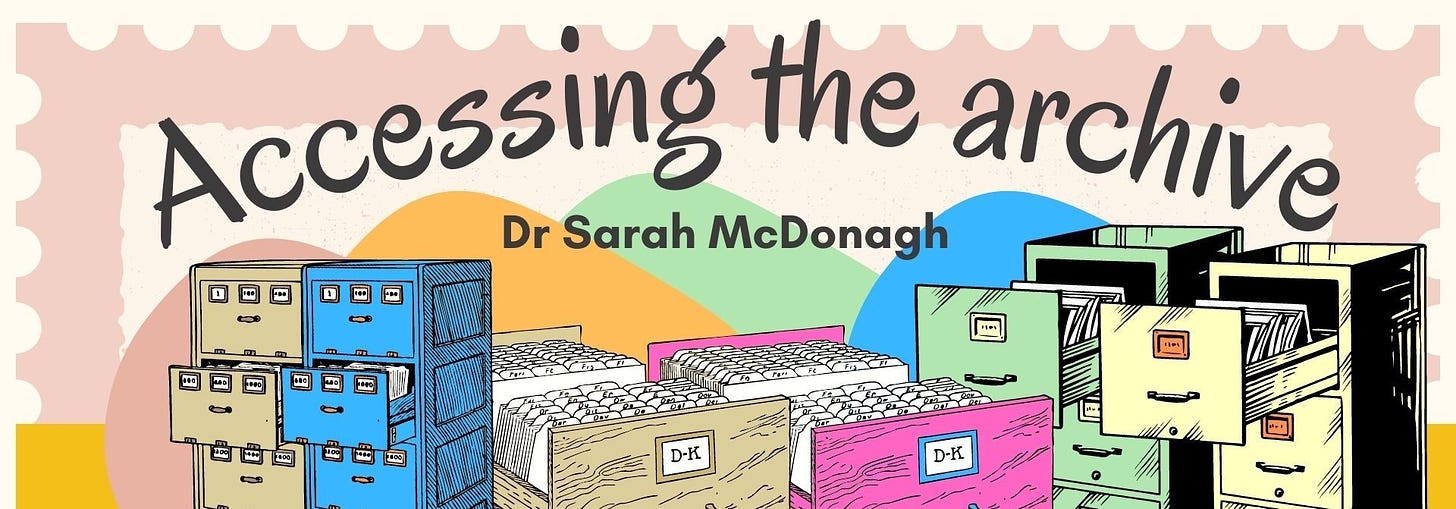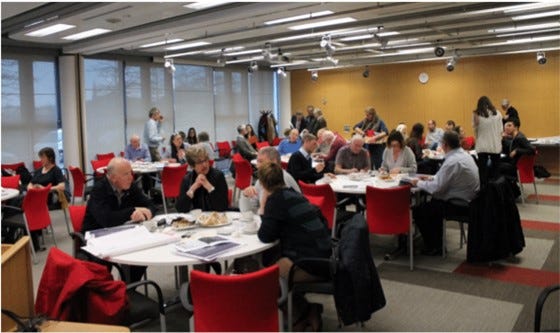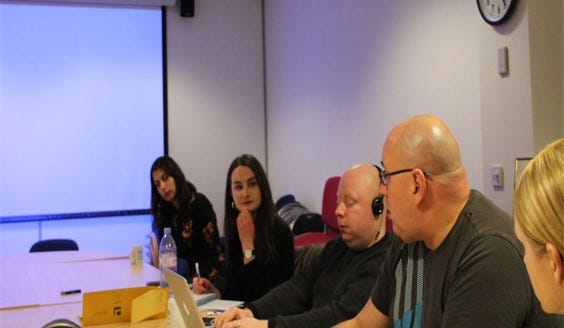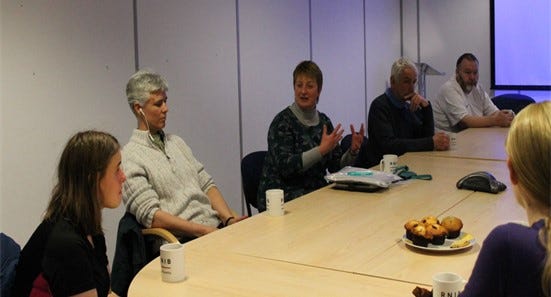Sarah McDonagh (Universitat Autònoma de Barcelona)
LinkedIn: https://www.linkedin.com/in/sarah-mcdonagh-5b758050/
Twitter: @Donagh_Sarah
Website: https://webs.uab.cat/transmedia/sarah-mcdonagh/
Most, if not all, researchers experienced the frustration of closed archives during lockdown. Without the ability to offer access to key historical documents in-person, many cultural institutions filled the gap by making their collections available online (Sye 2022). Yet, despite various technological workarounds, many researchers, including the disabled, still faced barriers when accessing key historical information. These barriers included inaccessible institutional websites, poor quality PDFs, lack of transcripts of handwritten documents as well as inaccessible or absent audio and audiovisual content, and inability to activate accessibility features, such as zoom options and text-to-speech function.
I first became interested in the issue of access to archives when I worked with the Prisons Memory Archive (PMA), creating audio descriptive guides of their video tours of the Maze and Long Kesh prison as part of my PhD research. Audio description is an access service that “seeks to make audiovisual information accessible through spoken language” (Hutchinson, 2019, p.ii) and typically caters to people who are blind or partially blind, although its use extends far beyond this group to include a wide range of potential users (see Hutchinson 2019).
Working with the PMA staff and participants, which included former prisoners, staff and visitors, as well as with blind, partially blind and non-blind people from across Northern Ireland, we created audio descriptive guides of the Compound (n.d.), H-Block (n.d.) and Hospital (n.d.) buildings of the Maze and Long Kesh prison, which were eventually available to access on the PMA website. The creative approach was collaborative, with participants offering feedback on the various versions of the descriptive guides, as shown in figure 1, the results of which fed back into the creative process (see McDonagh 2022; 2023).
By engaging with the PMA, PMA participants as well as blind, partially blind and non-blind people from across Northern Ireland, we demonstrated the potential of accessible content as an alternative way of making historical and educational content more inclusive to people of all abilities (McDonagh 2023). While challenging, given the sensitivity of the source material, creating the audio descriptive guides of the video tours of the Maze and Long Kesh prison facilitated access to the PMA archive for people who might not otherwise have access to it.
However, audio describing audiovisual content is only one component of the larger issue of digital accessibility. Equitable access online is a necessary step to ensure broader participation in socio-political discussions of every sort. It is also mandated by law under the UK Equality Act (2010), which places a responsibility on service providers to make reasonable adjustments to ensure that their services, including websites, can be accessed by disabled people. In addition to this Act, the UK government also published accessibility regulations, known as the Public Sector Bodies (Website and Mobile Applications) (No.2) Accessibility Regulations (2018), which require public sector bodies to ensure their websites and mobile devices are accessible to disabled people.
Internationally, the Web Content Accessibility Guidelines (WCAG) provides a comprehensive guide on how to ensure web accessibility, including app accessibility, for disabled people. The WCAG guidelines offer a blueprint for greater web accessibility of institutional websites and digital collections. For example, it offers guidance on ensuring the architecture of a website is user-friendly for people with additional access needs, offering advice on the content and organisation of a webpage. Some examples include the use of semantic elements, such as headings and subheadings, to structure web content so that it is easily navigable for people who use assistive technologies. Other recommendations include the use of descriptive language for page titles and concise information that is easy to understand and free from technical jargon; sufficient colour contrast between the text and the background of a webpage; availability of information in a range of different formats (such as downloadable Word documents) and the addition of alternative text of images for people who use screen readers.
Safeguarding against inaccessible content is a pressing concern for the heritage sector as it becomes increasingly digitalized. Ensuring that digital archives are open and accessible not only improves the experience for disabled people, but also for other researchers who might otherwise struggle to navigate online digital repositories. The work of the PMA is just one example of how to prioritise access to the archive, but more work needs to be done to ensure broader access to the archive more generally. More recently, the project CollabArchive, together with the Public Records of Northern Ireland (PRONI), has worked with blind volunteers to create transcriptions of some of their archival material (Bennett 2022). This initiative is part of a move to make available to the public materials that were previously difficult for most to access and impossible for some. As a training opportunity, the work of CollabArchive also offers a blueprint for inclusive training for disabled people, who are twice as likely, on average, to be unemployed in comparison to their non-disabled counterparts (Department of Work & Pensions 2023). More broadly, the work of CollabArchive demonstrates the possibility of achieving greater accessibility to the archive, which upends traditional notions of disabled people as passive receptors of information and instead recognizes their potential as producers of accessible content which, in turn, allows people of all abilities to participate in public discourse surrounding the most pressing and important issues of our time.
Works cited
Bennett, Carol. 2022. ‘Getting Started with Your Research’. CollabArchive. 21 November 2022. https://collabarchive.org/blog/2022-11-21/getting-started-with-your-research.
Department for Work & Pensions. 2023. ‘Official Statistics: Employment of disabled people 2022’. https://www.gov.uk/government/statistics/the-employment-of-disabled-people-2022/employment-of-disabled-people-2022#introduction.
McDonagh, Sarah. 2022. ‘Audio Describing the Video Tours of the Maze and Long Kesh Prison: Key Considerations, Challenges, and Opportunities’. In The Prisons Memory Archive: A Case Study in Filmed Memory of Conflict, 1st ed., 147–58. Delaware, United States: Vernon Press.
McDonagh, Sarah. 2023. ‘Accessing Northern Ireland’s Contested Past: Creating Descriptive Guides of the Maze and Long Kesh Prison Video Tours’. Journal of Specialised Translation, no. 39.
Public Sector Bodies. 2018. The Public Sector Bodies (Websites and Mobile Applications) Accessibility Regulations. Vol. 852. https://www.legislation.gov.uk/uksi/2018/852/contents/made.
Sye, David. 2022. ‘Use of Digital Archives during the Covid-19 Pandemic by Murray State History Students’. Journal of Contemporary Archival Studies 9 (9).
Websites cited.
CollabArchive (n.d.).
https://collabarchive.org/
Prisons Memory Archive (n,d.).
https://prisonsmemoryarchive.com/
Prisons Memory Archive, Video Tours (2021). https://prisonsmemoryarchive.com/the-prisons/maze-and-long-kesh/
Web Accessibility Initiative (n,d.). Web Content Accessibility Guidelines. https://www.w3.org/WAI/standards-guidelines/wcag/






